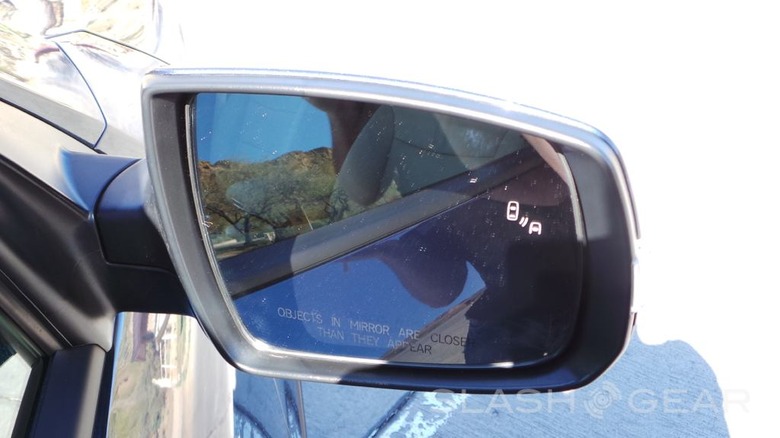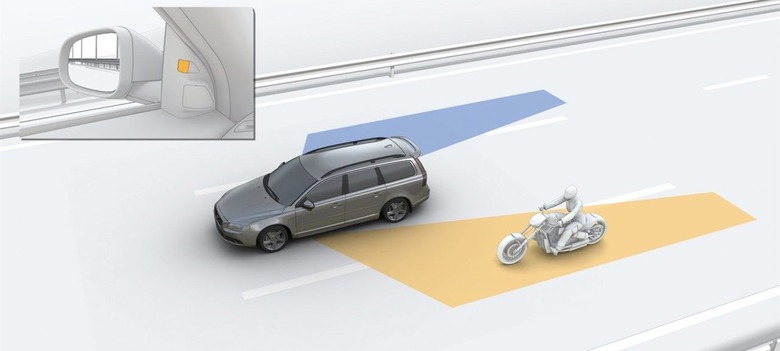It's Time This Car Safety Tech Was Standard
Some car technology is frivolous or pure luxury; other added-extras are a matter of personal taste. If you want leather seats, or a 1,300W audio system, or autonomous parking, you probably should pay extra for it. Even some safety technology, like adaptive cruise control or active lane-keeping assistance, falls into the convenience category more than a must-have essential.
I think, though, that the time has come for one of the most useful – and potentially life-saving – technologies the modern auto industry has come up with to be mandated as standard-fit equipment. It's a system that not only aids the individual driver but helps keep those around them safer too; could help avoid hundreds of thousands of dollars of accident repairs every year, if not more; and unlike Tesla's Autopilot or similar piloted driving systems, requires a surprisingly small amount of gadgetry. I'm talking about blind spot detection, or BSD.
If you've not tried a recent car with blind spot detection, it's functionally pretty straightforward. Sensors in the sides of the car track traffic either side of your vehicle; if there's something in that blind-spot, which you might not see if you glance into the side mirror normally, a light comes on to warn you. On some cars, that's integrated into the A-pillar. On others, it shines through the side mirror glass itself.

Opinions vary on how much the systems actually add to safety. Back in 2010, IIHS funded a study into BSD that concluded 395,000 crashes could be avoided each year were the system widespread. Of those incidents, 20,000 injuries and 393 fatalities could be prevented, the study estimated.
The NHTSA is less ebullient, though agrees that "consensus is building that drivers may benefit from BSD systems that offer the potential to reduce crash rates, and by extension, reduce injuries and fatalities in lane change related crash scenarios." It did its own simulations, based on a generic sensor, and estimated it could potentially prevent as many as 62,000 crashes. Of those, up to 3,000 injuries could be avoided, it estimated, and 61-95 fatalities.
As a consequence, the NHTSA plans to add BSD testing to its future 5 star safety reports. Expected to begin from model year 2019 cars, there'll be three such scenarios each vehicle runs through, dubbed POV pass-by, POV, and Secondary Other Vehicle (SOV) pass-by. Together, they'll test the systems' ability to detect vehicles at matching speeds alongside, vehicles about to overtake, and with overtaking vehicles on both sides.
Exactly how performance in those tests will impact the current system of five star ratings remains to be seen. Currently, crash-avoidance technology – such as blind spot detection, lane-departure detection, automatic emergency braking, and other active safety features – isn't taken into account. Come the updated tests, though, cars could well lose out on their four or five star ratings if they don't include such technology, or if it doesn't perform to the NHTSA's standards.

Still, there's a gulf between encouraging adoption of BSD and making it mandatory, and I suspect it's the latter which the NHTSA should be pushing for. There's certainly prior form there: the fact that all cars sold in the US will need to have a reversing camera fitted as standard from 2018 is evidence of that. Previous requirements for things like safety belts and airbags may have seemed draconian to start, but were quickly acknowledged as vital to road traffic safety.
I suspect blind spot detection could easily do the same. It's a technology that, when you've driven for a while in a car fitted with it, stepping into a vehicle missing the system is noticeably jarring. Unlike emergency braking, or other similar last-resort safety add-ons, it's something you make use of every day. Honestly, after several years of reviewing cars, it's the option I'd most recommend checking when you order a new vehicle.
NEXT UP: Watch Tesla's Autopilot spot a crash before it happens
Really, though, I'd prefer to see it be a non-option, because blind spot detection would be installed as standard. We're some way off that point, yes, but the statistics and the driver feedback suggest the roads are ready – and could be safer – were it more widespread. Autonomous cars may one day allow us to ignore the traffic around us, but until that time, anything that gives us a better view of the road has to be a good thing.
